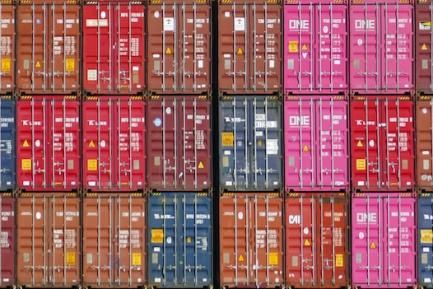In 2015 there was a change around in the economic cycle between the advanced and emerging economies: growth speeded up considerably in the former but slowed down in the latter. In 2016 growth in the developed economies will consolidate and reach 2.2% (compared with 2.0% in 2015) while totalling 4.5% in the emerging economies (compared with 4.0% in 2015). The United States and United Kingdom are already in a phase of consolidated growth with expected rates of 2.5% and 2.3% in 2016, respectively, but the euro area and Japan are still lagging behind a little: the euro area's recovery is going according to plan, moderate but sustained, and GDP is expected to grow by 1.8% in 2016 while Japan, whose activity is advancing more slowly, will grow by 1.0% in 2016. These are positive economic prospects for the advanced countries as a whole, moreover within a context of low inflation that provides the leeway for monetary policy to remain expansionary in general. However, we must not forget there are significant risks on the horizon with a strong political component. Let us analyse them in more detail.
Firstly, the different position of advanced countries in the economic cycle will lead to monetary divergence with significant effects both for their own economies and also globally. In the United States, the start of interest rate hikes by the Federal Reserve (Fed) will represent an important step in normalising its monetary policy, beginning in 2013 with the institution reducing its level of asset purchases (tapering). The pace and size of these hikes will depend on the US economy's resilience and particularly the trend in its labour market over the coming year but, for the time being, activity is advancing apace and the unemployment rate fell to 5.0% in October, coming close to its equilibrium level, although wage increases and general inflation are still contained and labour participation is still weak. The United Kingdom should also start normalising its monetary policy in 2016 given its economic recovery, with interest rate hikes that could be slower and more gradual than on previous occasions. The governor of the Bank of England (BoE) has warned, however, that this increase might be delayed a few months due to increasing global economic risks and low inflation. Both central banks appear to be concerned about the impact of their hikes not only on their own economies (now in an expansionary phase) but also on other countries and on global financial stability.
While these two economies will start to normalise their monetary policy in 2016, the euro area and Japan will continue with their accommodative policy and may even intensify it. The ECB will keep its reference rates close to zero and has announced that it might even expand its quantitative easing programme if deemed necessary (see the Focus «Quantitative Easing: the ECB is going shopping»). In Japan the central bank might also accelerate its already high rate1 of asset purchases in order to put an end to deflation and increase nominal GDP.
This monetary divergence between Anglo-Saxon and European-Japanese policies will continue to affect exchange rates, resulting in appreciation for the currencies of those countries normalising their monetary policy (and depreciation for the currencies of those which are not), and will have repercussions in the financial markets (for more details see the Dossier «2016: challenges and opportunities in a demanding global financial environment»). It will also lead to changes in capital flows between countries including the emerging economies, which in the last few years had benefitted from expansionary policies via an increase in demand and significant capital inflows.
The aim of the accommodative and unconventional monetary policies implemented over the last few years of crisis has been bring to a definite end the problems of high unemployment and low inflation after the Great Recession. However, the short-term gains such policies may provide can become long-term costs, with the resulting excessive liquidity and the rise in global indebtedness of particular concern. Excessive liquidity has obviously helped to push up the price of some assets: in the US the S&P index has gained more than 100% since 2009 while real estate prices have risen considerably in the United Kingdom, the Netherlands and Sweden. Private debt (one of the initial causes of the crisis) has also continued to grow as a consequence of these monetary policies, perhaps encouraging investors to take on too much risk.
Interest rate hikes in the advanced countries must begin when there are signs that the recovery is starting to firm up, especially as we know that the impact of such policies takes several quarters to be felt. In any case the central banks will take into account the movements made of the rest of the central banks to adjust their policies. Monetary policies are so interrelated that, in relative terms, the ECB's expansionary policy would be comparatively less expansionary if normalisation by the Fed or BoE were delayed. We should remember that monetary policy has been taken to its limit and that, if growth does not consolidate, particularly in the euro area countries and Japan, it is unlikely to be able to make any further contribution. The alternatives are not very encouraging, however. Fiscal policy does not have much leeway in those euro area countries that might need it. Nor in Japan which, in short, has a high deficit and high levels of public debt. On the other hand significant progress must also be made in creating the single European market. Although important advances have been made, in particular in constructing banking union, important reforms are still pending, as indicated by the «Five Presidents' Report» in 2015. For its part Japan must make headway with structural reforms for its economy, the highly incomplete third pillar of Abenomics; reforms which would also have more long-term effects.
Apart from these challenges related to economic policy, the advanced countries will also need to tackle critical political risks in 2016, both internally and externally. The US is facing the end of President Obama's mandate, whose agenda has accelerated on several fronts. It is particularly important to complete commercial treaties such as TIPP and TPP2 to boost world trade at a time when this might slow down. Also important is the renewal of diplomatic and commercial relations with Cuba, as well as closing an agreement with Iran to put an end to trade restrictions, especially Iranian exports of energy goods.
For its part the European Union will first of all have to manage a serious humanitarian crisis in 2016: according to UNHCR, the number of refugees entering Europe could exceed one million, in addition to a similar number entering in 2015. In the short term this migration will entail a rise in public expenditure although, as refugees integrate, it will increase the labour force. The European Commission has tentatively estimated that this could increase the level of GDP by 0.2 or 0.3 pps in the next two years. The challenge will be to manage the arrival of refugees given the already battered relations between countries in the European Union that are more or less against taking them in. Nevertheless, successfully integrating these refugees is crucial for the continent's political stability and to ensure they can contribute to the euro area's economic growth in the long term.
Other political risks are also present in this context, such as the fragmentation of public treasuries in several countries, including Spain, the rise of populist parties (anti-euro and anti-immigration) and the referendum on the United Kingdom staying in the European Union, which could lead to «Brexit». Given this situation, it will be complicated to advance in constructing economic union in the euro area. Externally, there are additional risks for the advanced economies caused by the slowdown in emerging countries (see the Dossier article «Outlook and doubts for the emerging economies») and, more acutely, geopolitical conflicts (Ukraine, Middle East) and terrorism, other volatile sources of instability with serious consequences.
As we have seen, the risks faced by the advanced countries in 2016 will be critical and varied. Firstly, they will be related to monetary policy and the consequences of growing monetary divergence among advanced economies. But secondly, and importantly, we will also be facing risks associated with political challenges, both internal and external, that are bound to be difficult to handle. However you look at it, 2016 will not be a quiet year.
Josep Mestres Domènech
Macroeconomics Unit, Strategic Planning and Research Department, CaixaBank
1. In the last 12 months, up to September, the Bank of Japan has bought assets totalling 80 trillion yen, the equivalent of 16% of its GDP (at its peak, the Fed's asset purchase programme represented 6.5% of US GDP).
2. TIPP: Transatlantic Trade and Investment Partnership; TPP: Trans-Pacific Partnership.





